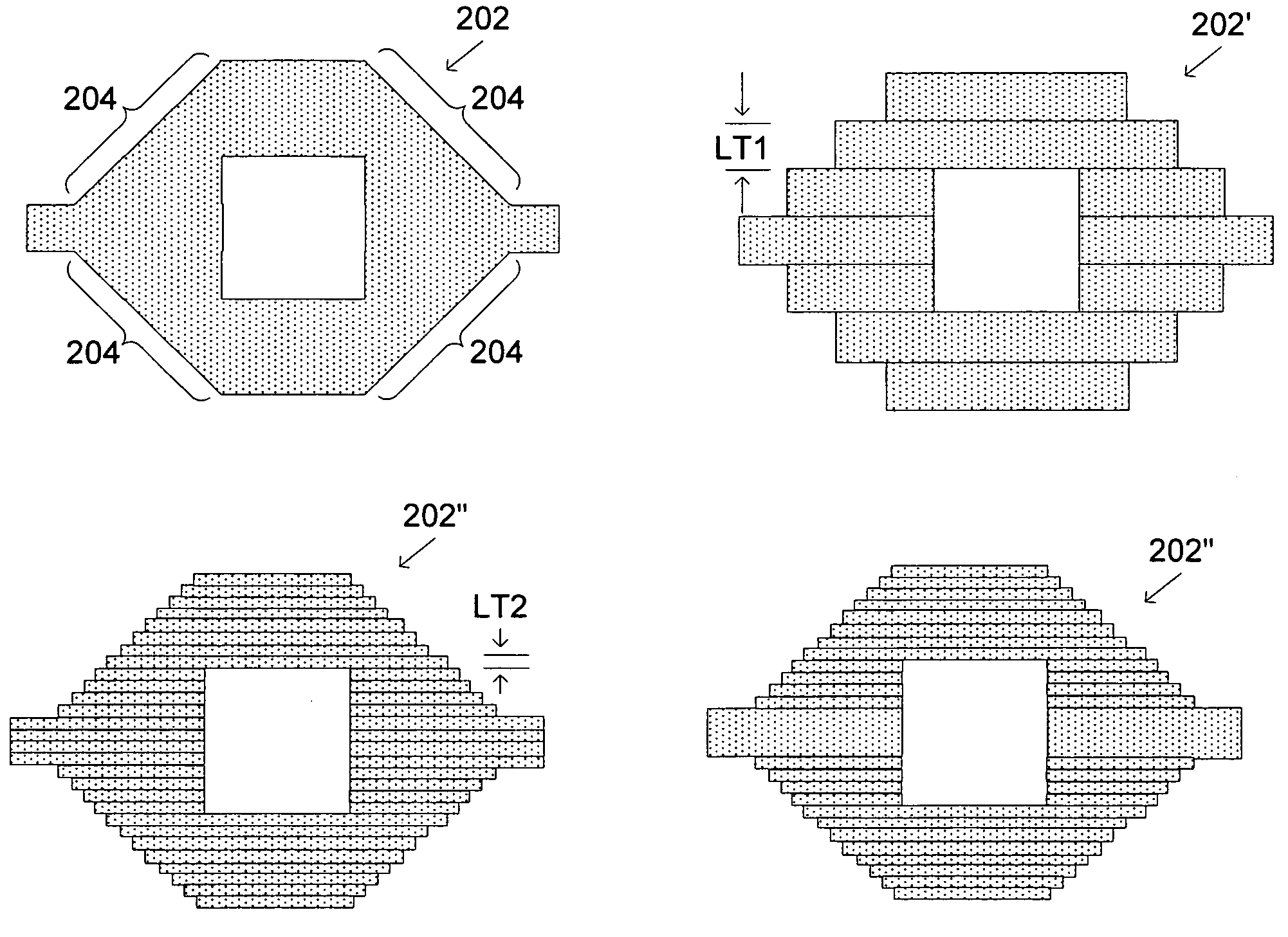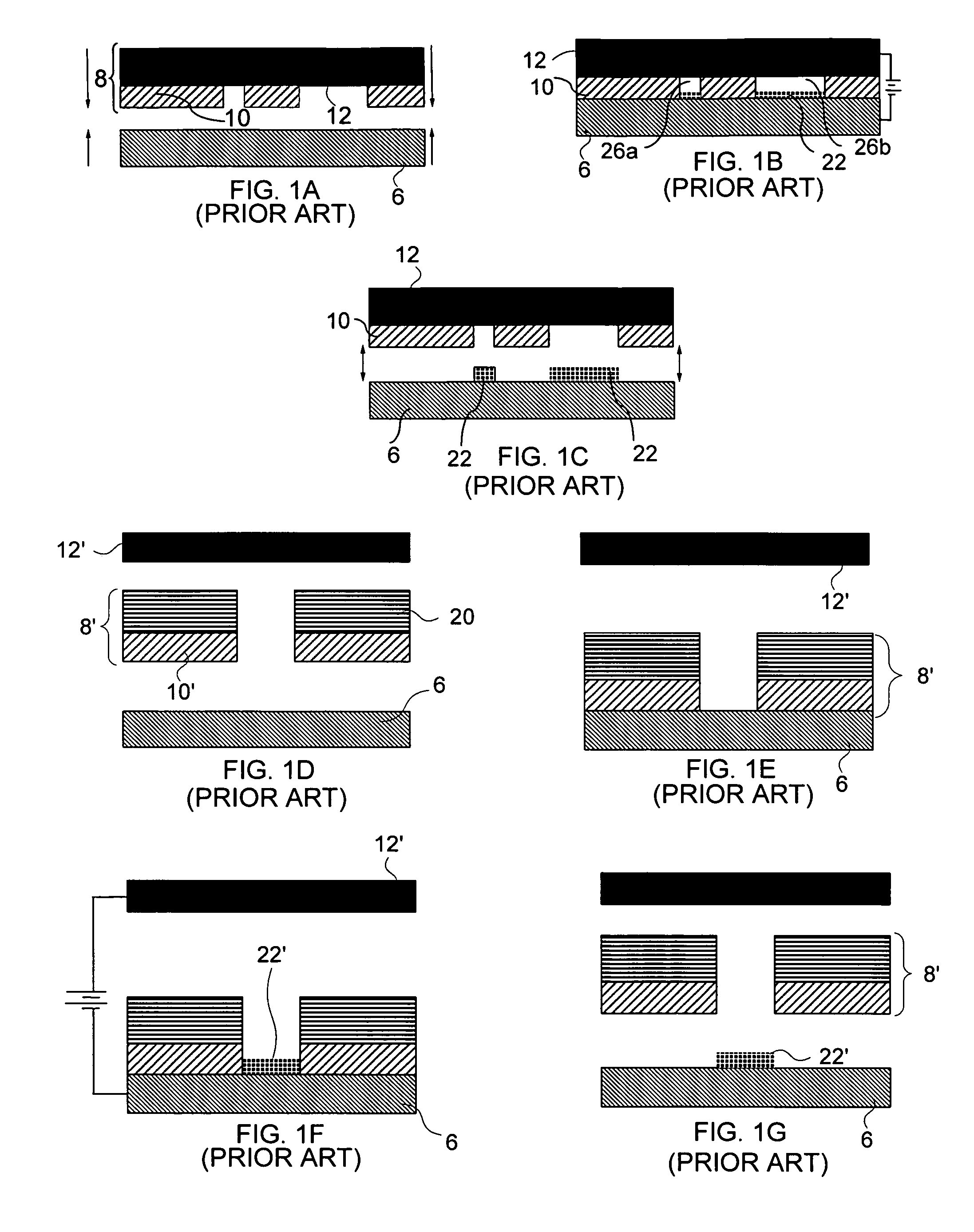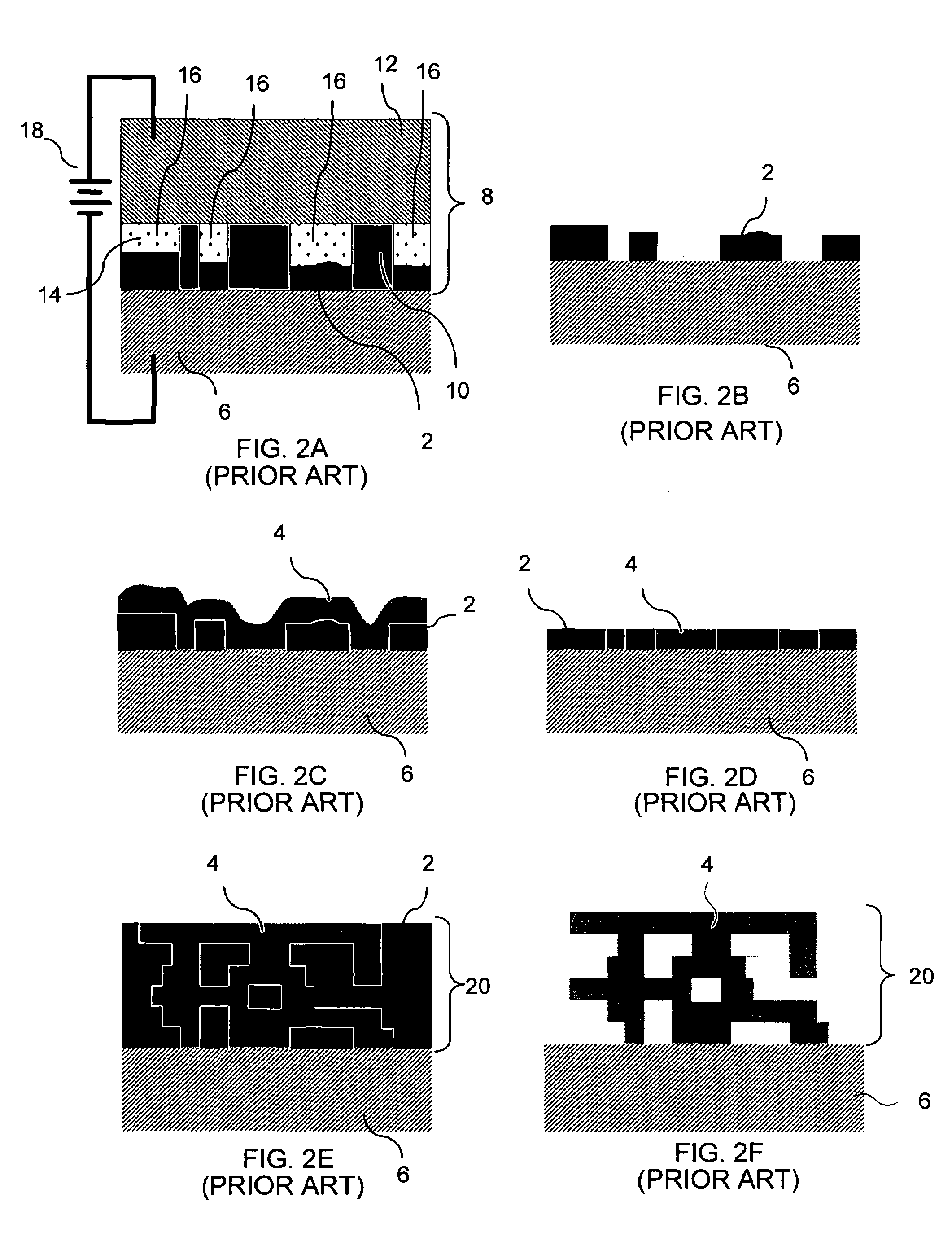Methods of reducing interlayer discontinuities in electrochemically fabricated three-dimensional structures
a three-dimensional structure and discontinuity reduction technology, applied in the direction of liquid/solution decomposition chemical coating, waveguide type device, coating, etc., can solve the problem of destructive separation of masking material from substrate, and achieve enhanced electrochemical fabrication techniques, smooth layer-to-layer discontinuities, and reduce the size of or otherwise.
- Summary
- Abstract
- Description
- Claims
- Application Information
AI Technical Summary
Benefits of technology
Problems solved by technology
Method used
Image
Examples
embodiments
Twelfth Group of Embodiments
[0104]In a twelfth group of embodiments of the invention composite structures may be formed in the process of reducing surface discontinuities.
[0105]In example of such an embodiment may start with the creation of a protruding structure of desired configuration. The structure may then be coated with a polymer or other dielectric material via electrostatic, electrophoretic, powder coating, spraying or the like. If the deposited coating is not of sufficient smoothness, the coating may be heated to allow surface tension to aid in the smoothing of the coating. The structure may be used in its current form or alternatively it may undergo further processing. For example, the further processing may include deposition of a seed layer and the electrodeposition of a coating metal.
Thirteenth Group of Embodiments
[0106]In a thirteenth group of embodiments, the deposition or combination deposition and etching discontinuity reduction techniques may be used to smooth the ...
PUM
| Property | Measurement | Unit |
|---|---|---|
| three-dimensional structure | aaaaa | aaaaa |
| time | aaaaa | aaaaa |
| height | aaaaa | aaaaa |
Abstract
Description
Claims
Application Information
 Login to View More
Login to View More - R&D
- Intellectual Property
- Life Sciences
- Materials
- Tech Scout
- Unparalleled Data Quality
- Higher Quality Content
- 60% Fewer Hallucinations
Browse by: Latest US Patents, China's latest patents, Technical Efficacy Thesaurus, Application Domain, Technology Topic, Popular Technical Reports.
© 2025 PatSnap. All rights reserved.Legal|Privacy policy|Modern Slavery Act Transparency Statement|Sitemap|About US| Contact US: help@patsnap.com



